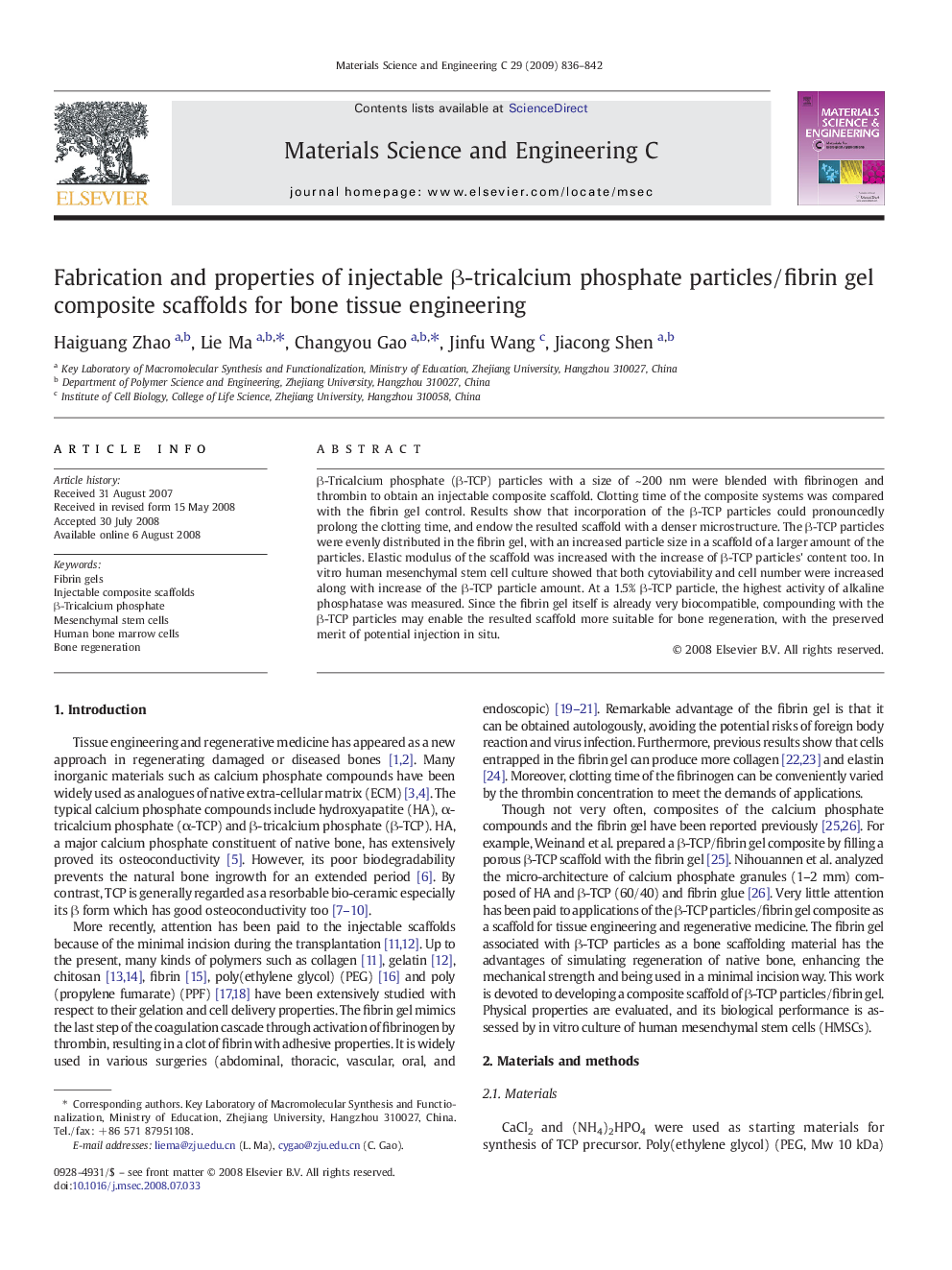| Article ID | Journal | Published Year | Pages | File Type |
|---|---|---|---|---|
| 1430155 | Materials Science and Engineering: C | 2009 | 7 Pages |
β-Tricalcium phosphate (β-TCP) particles with a size of ~ 200 nm were blended with fibrinogen and thrombin to obtain an injectable composite scaffold. Clotting time of the composite systems was compared with the fibrin gel control. Results show that incorporation of the β-TCP particles could pronouncedly prolong the clotting time, and endow the resulted scaffold with a denser microstructure. The β-TCP particles were evenly distributed in the fibrin gel, with an increased particle size in a scaffold of a larger amount of the particles. Elastic modulus of the scaffold was increased with the increase of β-TCP particles' content too. In vitro human mesenchymal stem cell culture showed that both cytoviability and cell number were increased along with increase of the β-TCP particle amount. At a 1.5% β-TCP particle, the highest activity of alkaline phosphatase was measured. Since the fibrin gel itself is already very biocompatible, compounding with the β-TCP particles may enable the resulted scaffold more suitable for bone regeneration, with the preserved merit of potential injection in situ.
